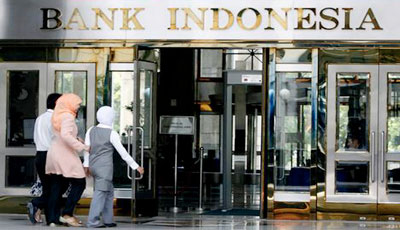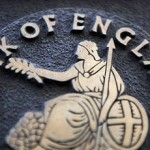Bank of Indonesia Rate Lowered by 25 bps to 7.50%

On 17th February 2015, the Bank Indonesia Board of Governors decided to lower the BI Rate 25 bps to 7.50%, with the Deposit Facility rate also reduced 25 bps to 5.50% and the Lending Facility rate maintained at 8.00%, effective 18th February 2015. Such policy measures were instituted based on Bank Indonesia’s conviction that inflation will remain under control at the lower end of the 4±1% range in 2015 and 2016. The current policy direction is consistent with Bank Indonesia’s efforts to reduce the current account deficit to a more sustainable level. In addition, maintained macroeconomic stability was also inextricably tied to close coordination between Bank Indonesia and the Government at the central and local levels. Furthermore, Bank Indonesia warmly welcomes ongoing energy subsidy reforms, the planned expedition of infrastructure development as well as measures to improve the investment climate, including integrated licensing services (PTSP). Bank Indonesia perceives that with approval of the 2015 budget, government-led fiscal stimuli and structural reform policy will catalyse stronger and higher quality economic growth. Moving forward, Bank Indonesia will continue to strengthen its monetary and macroprudential policy mix, as well as tighten coordination with the Government to ensure inflation remains low and the current account deficit is managed at a sounder level.
The global economic recovery is predicted to endure, albeit at an uneven pace. The US economy is forecasted to grow beyond previous projections. Conversely, the economies of Japan and China are expected to expand more slowly than previously thought. The protracted recovery in Europe is predicted to persist, overshadowed by diminishing consumer confidence and the threat of deflation. Such conditions prompted the European Central Bank (ECB) to stimulate the economy through implementation of its Expanded Asset Purchase Program (EAPP). The planned monetary stimulus package is expected to spur an influx of foreign portfolio capital to emerging market countries, including Indonesia, despite potential global financial market uncertainty and volatility.
Economic growth accelerated in Indonesia during the fourth quarter of 2014 in comparison to the preceding quarter, despite annual growth for 2014 slowing down. The Indonesian economy achieved 5.01% (yoy) growth in the fourth quarter, up from 4.92% (yoy) in the previous period, indicating that the current contractionary phase of the economic cycle, which has persisted for several years, passed its nadir in the third quarter of 2014. National economic gains are primarily associated with stronger domestic demand in the form of construction investment and government consumption. Meanwhile, household consumption remained robust but moderated slightly in line with economic stabilisation policy. From an external standpoint, exports contracted relatively deeply as demand from emerging market countries ebbed and commodity prices dropped. Despite early signs of improvement during the fourth quarter of 2014, annual growth slowed in 2014 to 5.02%, which is lower than that posted in the preceding year, consistent with weaker global economic growth and macroeconomic stabilisation policy. By region, economic downswings affected several mining-based provinces, including Aceh, East Kalimantan, Riau and Papua. In contrast, regions that rely on manufacturing, such as Java and Jakarta, continued to achieve relatively robust growth. Stronger economic growth is projected in 2015, in the range of 5.4-5.8%, bolstered by expansive government investment as fiscal capacity expands to catalyse productive economic activity, including infrastructure development as approved in the 2015 budget.
The Indonesia balance of payments (BOP) improved in the fourth quarter of 2014, primarily due a smaller current account deficit. The current account deficit totalled US$6.2 billion (2.81% of GDP) in the fourth quarter, down from US$7 billion (2.99% of GDP) in the third. A growing non-oil/gas trade surplus, together with a decreasing oil and gas deficit, helped boost current account performance. The increasing non-oil/gas surplus was attributed to stronger export growth of manufactured products. Meanwhile, the financial and capital account recorded a large surplus, backed predominantly by foreign direct investment (FDI) congruent with the positive perception investors hold concerning the domestic economic outlook. In January 2015, the trade surplus totalled US$0.7 billion, exceeding that posted in the preceding quarter, bolstered by a smaller oil and gas deficit. Consequently, foreign exchange reserves swelled in January 2015 to US$114.2 billion, equivalent to 6.8 months of imports or 6.6 months of imports and servicing external debt, which is well above international adequacy standards of around three months.
The rupiah depreciated in line with broader US dollar appreciation. During the fourth quarter of 2014, the rupiah sank on average by 3.9% (qtq) to a level of Rp12,244 per US dollar. An increasingly solid US economy precipitated US dollar appreciation against all global currencies. Pressures on the rupiah persisted into January 2015 as the US dollar continued to appreciate in light of the ECB’s plan to loosen its monetary policy stance, which was repeated in a number of other countries. On average, the rupiah depreciated 1.21% (mtm) to a level of Rp12,581 per US dollar. Bank Indonesia considers the recent rupiah fluctuations beneficial in terms of the current account deficit through lower imports, in particular of consumer goods, as well as greater export competitiveness, especially of manufacturing exports. Furthermore, Bank Indonesia will continue to maintain rupiah exchange rate stability in accordance with its fundamental value, thereby safeguarding macroeconomic stability and economic rebalancing.
Inflation remained under control, thus supporting the prospect of achieving the 2015 inflation target, namely 4±1%. The Consumer Price Index (CPI) experienced deflation of 0.24% (mtm) in January 2015 as a tangible outcome of lower fuel prices and less intense inflationary pressures on volatile foods. In addition, core inflation was controlled at a level of 0.61% (mtm) or 4.99% (yoy). Bank Indonesia is confident that inflation will remain within the target corridor of 4±1% in 2015, supported by controlled core inflation, a lower international oil price and improved food security. Additionally, Bank Indonesia will continue to strengthen coordination with the central and local government in terms of managing inflation of volatile foods and administered prices in order to ensure attainment of the inflation target.
Financial system stability was maintained with the support of steadfast banking system resilience and relatively sound financial market performance. Banking industry resilience remained solid with credit risk, liquidity risk and market risk well mitigated and the support of a healthy capital base. At the end of the reporting quarter, the Capital Adequacy Ratio soared to 19.40%, well above the statutory minimum of 8%, while non-performing loans (NPL) were low and stable at around 2.0%. A sounder liquidity position was achieved primarily through the expansion of government accounts, with the gains expected to persist into January 2015 as currency flows bank into the banking system after the recent end-of-year celebrations. In terms of the intermediation function, credit growth decelerated to 11.6% (yoy) from 13.2% (yoy) at the end of the third quarter in line with ongoing economic moderation. Meanwhile, deposit growth in December 2014 was 12.3%, down from 13.3% in the preceding quarter. On the other hand, capital market performance improved as the IDX Composite continued to rally. In line with an expected economic upswing, deposit and credit growth are projected to accelerate respectively to 14-16% and 15-17%.



























